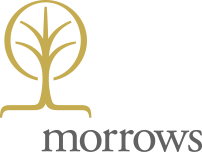Are you ‘super’ ready for end of financial year? The end of the financial year marks the start of tax time but before then it’s beneficial to assess your superannuation contributions to help maximise your tax benefit and grow your super investments.
Superannuation contributions are an excellent way to build up assets in a tax effective manner as contributions can be fully tax deductible to an employer for contributions made on behalf of an employee. Self-employed contributions are also fully deductible.
Below we discuss types of contributions and strategies our advisors recommend you to consider to boost your investment return.
From 1 July 2021, the general concession contributions cap is $27,500 due to indexation in line with average weekly ordinary time earnings.
Eligibility to Contribute
Super contributions vary depending on age and income. Here is a guide to what individuals can expect:
Under 66
From 1 July 2020, the recent change in legislation has allowed making contributions to super for anyone aged 65 or 66, as there is now no requirement to meet the work test and no restrictions regarding your eligibility to contribute, other than the contribution limits.
67 to 74
If you are between 67 and 74 years of age, it is necessary to have passed a work test to make superannuation contributions. The work test requires an individual to be gainfully employed for a minimum of 40 hours in a consecutive 30-day period during the financial year in which the contributions are made. For the purposes of this test, working includes employment and working in your own business.
From the 2022–23 financial year onwards, if you’re under the age of 75, it will no longer be required to have passed the work test to make certain superannuation contributions.
75 and over
Individuals aged 75 years and over cannot make any contributions to superannuation. Your superannuation fund can only accept contributions if you are over 75 years of age, in Employer Contributions and Downsizer Contributions.
Undeducted Contributions
It is also possible to contribute to superannuation without claiming a tax deduction for the contributions. The key advantage of making these contributions is that the income on the amounts within superannuation are taxed at a reduced tax rate compared to that of individual tax rates.
- The non-concessional contribution limit is $110,000 per annum.
It is possible to utilise the two future year’s limits and make a non-concessional contribution of up to $330,000 in one year, depending on your total superannuation balance on 30 June of the previous Financial Year. To be eligible to access the future year’s limits, you must be under 67 at 1 July in the financial year you contribute. This ‘bring forward’ rule is automatically triggered in the first financial year in which a non-concessional contribution exceeds the annual limit.
- If you are 65 years old or older, you may be able to choose to make a ‘downsizer contribution’ into your superannuation of up to $300,000 from the proceeds of selling your home. The downsizer contribution is not a non-concessional contribution and will not count towards your contribution caps. It will form part of your tax-free component held in the superannuation and your total superannuation balance on the following 30 June. From 1 July 2022 the age requirement for a downsizer contribution is being reduced to age 60. Reach out to your advisor to understand if you are eligible.
It’s important to note that if you are intending to make any additional contributions, we suggest you do so before June 10th to ensure your payment is received in time and your balance is adjusted before the June 30th cut off.
Transition to Retirement / Salary Sacrifice
It is possible to start withdrawing your superannuation benefits as an income stream without actually retiring. This can be done to supplement your income during a low-income year or as part of a salary sacrificing arrangement.
The only conditions on the establishment of this type of income stream is that you have reached your preservation age and not “Retired”.
Minimum and Maximum Pension Payments
If you are currently drawing pensions from your Superannuation Fund, you must ensure minimum pension payments are made before 30 June 2022.
If you are receiving a transition to retirement income stream, you are also limited by a maximum withdrawal amount that cannot be exceeded for the financial year.
The payment of the minimum pension is crucial to ensure that the superannuation fund is eligible for the tax exemption on earnings and capital gains. Where the minimum annual pension has not been paid for the financial year, the fund income is taxable as if there is no pension. As such, it is vital that minimum pension payments are made from the superannuation fund bank account before 30 June 2022.
For many retirees, the significant losses in financial markets due to the pandemic are having a negative effect on the account balance of their superannuation pension or annuity.
To assist retirees, the Government has extended the 50% reduction of the minimum annual payment required for account-based pensions and annuities, allocated pensions and annuities and market-linked pensions and annuities for the 2021/22 and 2022/23 financial years. This addresses the current market volatility concerns and aims to provide SMSF Trustees with discretion and flexibility to better manage their cash flows and retain assets that may have substantially decreased in value.
Real Property Valuation Guidelines for SMSF
For the 2012–13 and later income years, trustees of SMSFs must value all fund assets at market value when preparing their fund’s financial statements and accounts each year. This is to comply with the superannuation regulations. In the lead up to the end of the financial year, we encouage fund trustees to consider the valuation of properties owned by SMSF.
SMSF trustees may wish to consider using a qualified independent valuer when valuing property, especially where the property’s value represents a significant proportion of the fund’s value.
If you choose to do so, you are not required to obtain an external valuation each income year. However, you still need to ensure the external valuation can be used to support the market value you have used when preparing the fund’s financial accounts and statements every year.
If an external valuation has become materially inaccurate or a significant event has occurred that may have affected the property’s value since it was last valued. In this case, you should no longer rely on it and obtain a new valuation or other evidence to support your valuation.
For more information on the requirements for the valuation of your property, please refer to our previous article or reach out to your advisor.
Any questions regarding your superannuation tax planning?
A proactive approach helps you make better decisions to minimise tax and add value to your superannuation investments. Please reach out to your Morrows Superannuation or Morrows Private Wealth advisor to help you implement strategies that best suit your unique investment needs.





